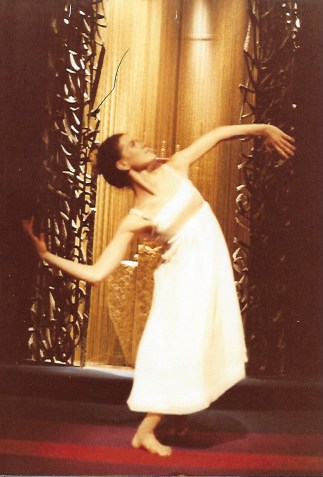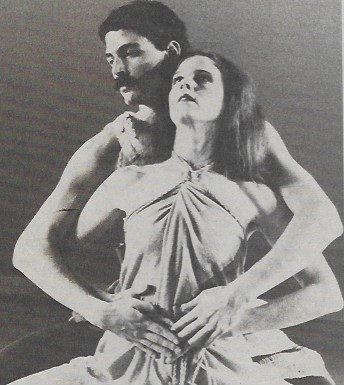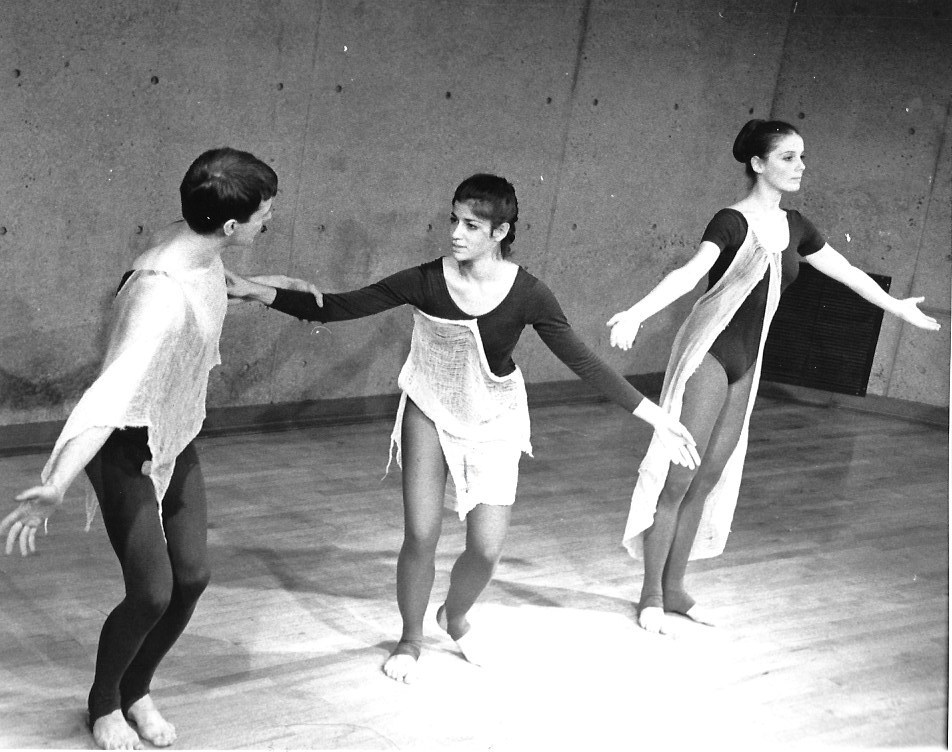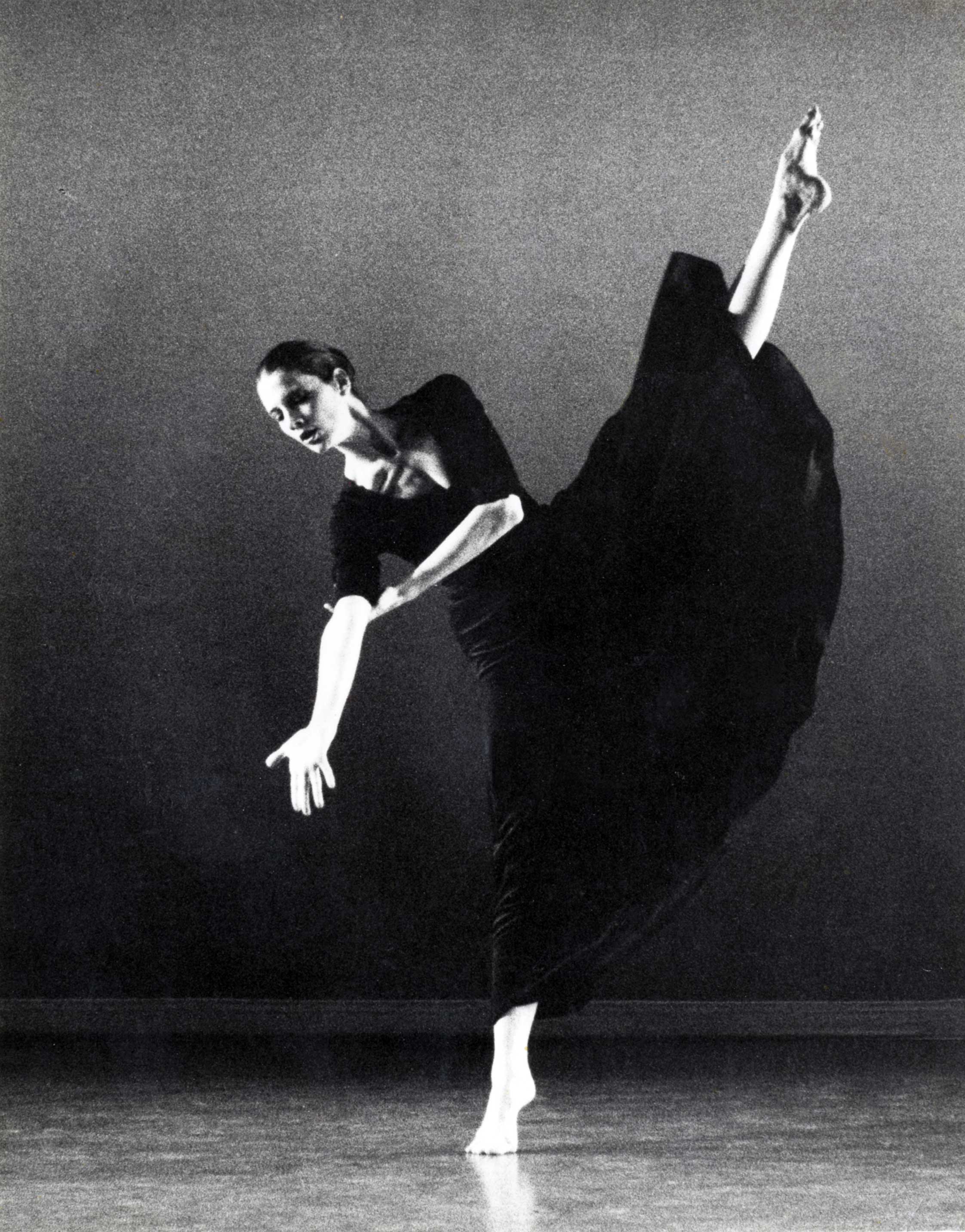While I am fuzzy on dates and exactly how I started a second company of Avodah in New York City I am clear on what motivated me. A modern dance company based on Jewish liturgy, rituals, text and history needed to be located in a place where there would be lots of opportunities for bookings and performances. Tallahassee was not that place. Yes, we had done a bit of touring in Savannah, Pittsburgh, Tampa and even one performance in Closter, NJ but somehow that wasn’t enough for me. While I found Tallahassee a wonderful place to experiment, to develop repertory, I longed for more opportunities to tour and share the repertory. The idea of having a second company based in New York City and making regular trips to New York really appealed to me.
By this time, I had stopped performing myself, stepping into the role of choreographing, directing and managing the business side of the company and non-profit. Around the same time, my father was spending a lot of time in the New York office of the sportswear company he worked for, and my sister, Peggy, had decided to make a transition to working in New York. My father and Peggy found a lovely apartment on the East side near the UN and so I had a place to stay. Peggy and I recently brainstormed exactly when that was and we think it was in May 1978. As best as I can tell from programs in my scrapbook, it was the summer of 1978 when I formed a company of 5 dancers and did an evening performance at Temple Israel on Manhattan’s Upper East Side.
How did I find the dancers? Well what is coming to mind is that I returned to take some classes from a favorite teacher of mine from Juilliard, Alfredo Corvino, who had a studio called Dance Circle on 8thAvenue between 46thand 47thStreet. That is where I found Lynn Elliott who would dance with the company for quite a few years. A dancer from Tallahassee that I had worked with, Peggy Evans, had moved to New York City and so I reached out to her to join the company. Three other dancers, Kathy McDonald, Yael, and Benjamin Greenberg, I may have found through an audition notice or perhaps I also found them at Alfredo Corvino’s studio.
Rabbi Walter Jacob, by then an Avodah Board member, reached out to Hebrew Union College-Jewish Institute of Religion, located at that time on West 68thStreet, and arranged for us to have rehearsal space at the school. That was the beginning of a long-term relationship with HUC-JIR. I hoped to invite people to the concert at Temple Israel who could help with bookings for the New York company. I have pictures that clearly show the repertory we did and that Irving Fleet joined us for the performance working with a choir for In Praise. Other pieces performed in the afternoon concert were Sabbath Woman and a newly created piece, I Never Saw Another Butterfly. The bema of the Temple provided a beautiful setting for the concert and one major contact was made for the company that had a profound impact on our development both in increased bookings for the New York company and in Florida for the Tallahassee company.


Stephan Bayer, head of the Lecture Bureau for the Jewish Welfare Board (now called the Association of Jewish Community Centers), attended the concert and asked if he could add us to the roster of people they represented. Furthermore, Stephan also agreed to welcome me into the Lecture Bureau office and teach me how to book performances and put a tour together. I am forever grateful to Stephan for the role he played in helping us develop as a company. Later Stephan joined our board and served as an outstanding President for a number of years. Our next New York performance was in the spring of 1979 as part of Hebrew Union College–Jewish Institute of Religion’s Sunday Afternoon at the College Series. Lynne Elliott, Peggy Evans and Kathy McDonald continued to dance with the company and two new dancers, Holly Kaplan and a male dancer whose name I can’t recall, joined us. The three pieces done in the summer were included along with a new piece Sarah which I had created in Tallahassee with the help of a grant from the National Foundation for Jewish Culture. The piece received its first performance in Tallahassee at Temple Israel on March 3 and six weeks later I restaged it with the New York company.

While the area the dancers had to work on was small, I remember being so proud of the performance they gave and I love this picture which was taken of us outside of HUC-JIR after the performance.

I feel so very grateful to have had long-term relationships with dancers in the company. Each relationship has taken on its own special character. Lynn Elliott worked with the company for a number of years and many years later her daughter Justine performed with us. I will be writing more about Lynn in later blogs. While Kathy McDonald only danced with us in New York for that first year, she has kept in touch with the company and myself through the years. Each year she has sent a contribution first during Avodah’s fundraising campaign and now Healing Voices – Personal Stories. I always feel a wonderful glow as I open the envelope and remember her beautiful lyrical quality portraying the bride in Sabbath Woman. Many years later, Kezia, looking for a place to take adult ballet classes in Poughkeepsie, found a wonderful class taught by Kathy, who had opened a studio there specifically for adult dancers. Besides realizing they had both been in Avodah, they discovered they had performed the same solo in I Never Saw Another Butterfly.
 Print This Post
Print This Post
Links to Recent Blogs
- The Pioneers of Modern Dance: My Firsthand Experience
- A Visit to a Costa Rican Art Museum Triggers a Fascination with Mascaradas
- Thoughts after Streaming a Memorial for Dance Critic Jack Anderson
- Keeping Up With What is Happening in the Dance World
- A Sijo Poem for the Winter Solstice
- Episode 33: The Universal Dancer Podcast – I’m Interviewed by Leslie Zehr
- The National Symphony of Costa Rica
- Can you go home again?
- Odd Thing to Find on eBay
- Chopping in the Kitchen













